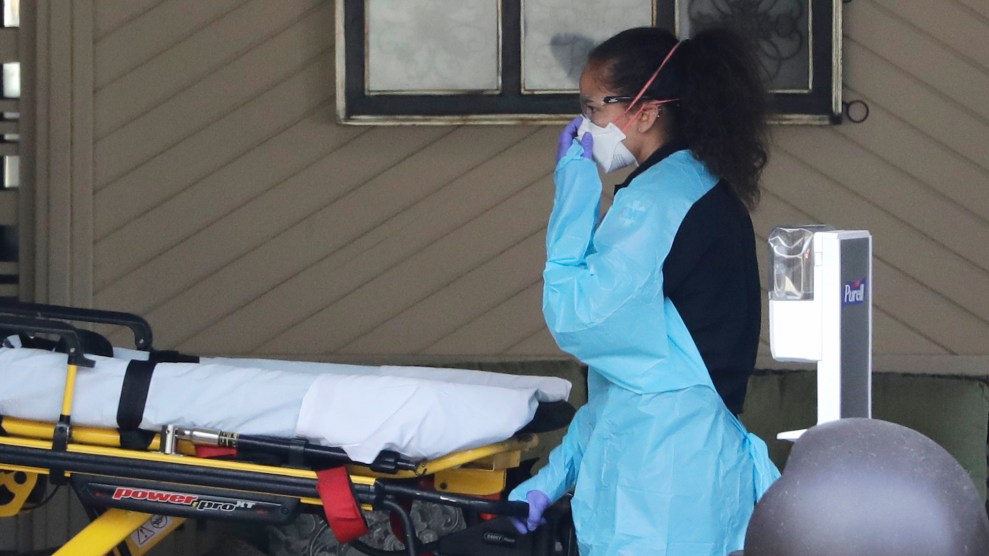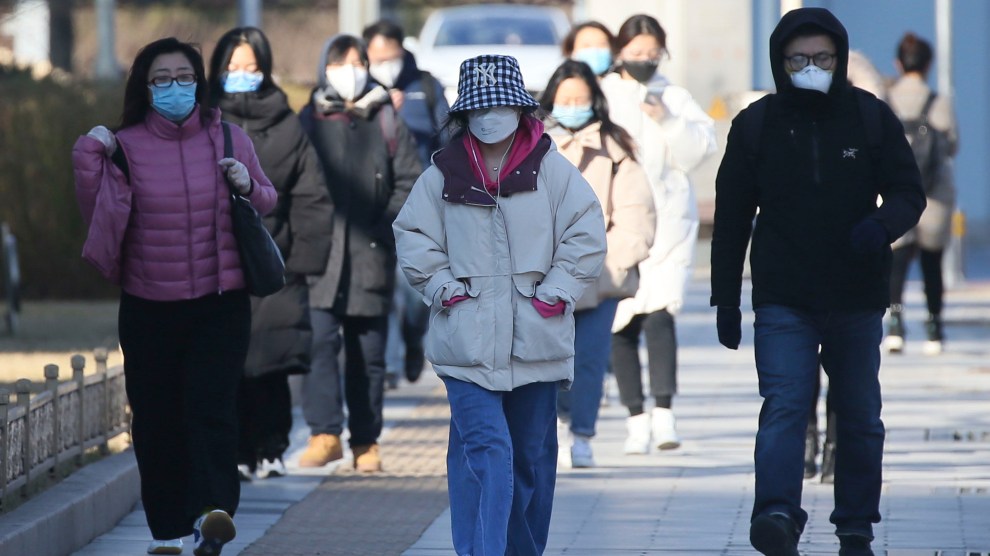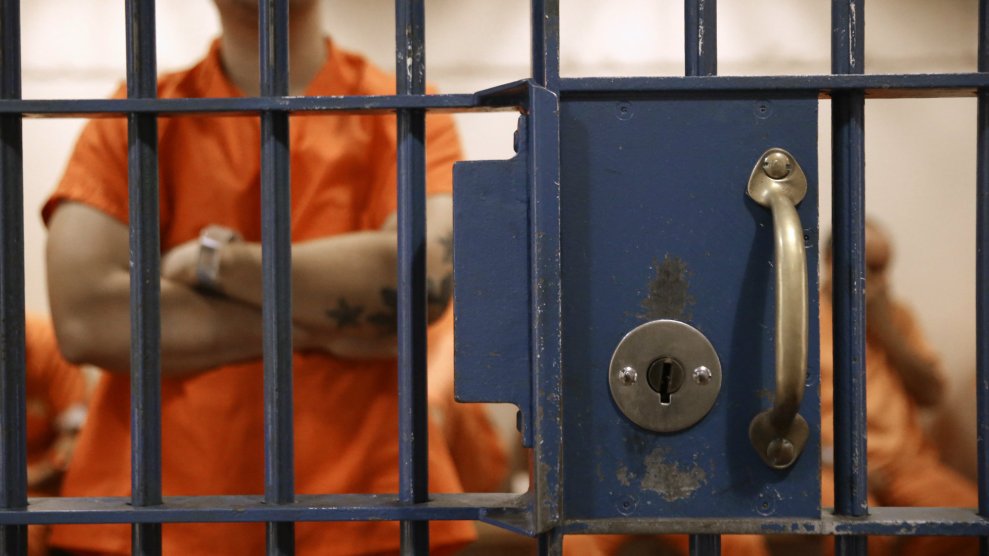
Peter Macdiarmid/AP
The numbers of infections and deaths from the novel coronavirus keep climbing. As of Friday, more than 100,000 people had been infected worldwide—including 250 cases in the United States. California, Washington state, Florida, and Maryland have all declared states of emergency. Local governments and businesses are cancelling travel plans and some schools and colleges have shut down completely. Grocery stores are being mobbed by shoppers stocking up on non-perishables and hand soap, while the general public is waiting to see just how bad the virus will get. But for people behind bars, the threat of an outbreak is even more alarming.
“The risk of community spread poses a critical and unique threat to vulnerable populations, including those in our prisons and jails,” Sen. Kamala Harris (D-Calif.) wrote in a letter to the Federal Bureau of Prisons, asking for the agency to provide information on how it’s preparing for the disease. But BOP only oversees the federal prison population, which makes up about 221,000 of the 2.3 million people in prison and jail. For the millions of people in prison and cycling in and out of jails, the facilities where they are expected to eat, sleep, shower and share space with countless others are the perfect breeding ground for coronavirus.
In order to understand how to possibly contain an infectious disease in a unhygienic facilities with close living quarters and what correctional staff can do about it, I interviewed Leah Pope, a senior research fellow at the Vera Institute who focuses on expanding access to health care for people in the criminal justice system.
We know that prisons and jails are the perfect breeding ground for coronavirus. But could you walk me through some of the specifics for why that is?
The same has been true for other outbreaks, like the swine flu several years ago. For starters, there’s basic jail hygiene. There are people sharing sinks, and they may have access to water but nothing to wipe their hands on. And hand sanitizer may be prohibited. The standards you’d want to implement in the general community are either impossible to follow or hard to do while incarcerated. Because of close living quarters, spread of disease can be quicker and access to basic medical services can be substandard.
What is the health care system like behind bars?
Jails and prisons don’t have any national accreditation bodies that they’re required to follow for health care standards. Many jails will opt to go through the process of accreditation, but many won’t. And even if they do, there’s nothing to hold over their heads for not meeting certain standards.
How would you describe their health generally, when there’s not an epidemic.
You’re already dealing with a population whose health is already compromised. And we do have an aging prison population and elderly people are already at an increased risk for coronavirus, so that should definitely be a concern.
Because people cycle in and out of jail more frequently are those inmates more at risk than someone who is incarcerated for a longer period of time?
Jails are particularly more frightening because of massive turnover. More than half of the jail population turns over each week*. So, there are people coming in from the outside community, being exposed, and taking it back into the community, or the other way around.
What can prisons and jails do to prepare for coronavirus?
There is basic influenza preparedness and the National Commission on Correctional Health Care made their guide free. It’s usually only available to those in the accreditation. But I think another key step is that jails need to be in communication with their local health department. For many jails, their health care is provided by a private company, but jail officials can proactively reach out to their county health department to make sure that the jail will be factored into whatever the county’s coronavirus plan is.
Iran let 54,000 prisoners go in order to combat coronavirus. Should we do that?
It’s amazing that Iran is ahead of us on that. But we’ve always had this problem with infectious diseases in prison and jails. Coronavirus is just bringing it to light. We really need to start thinking seriously about not incarcerating people and think about them as members of the same community.
This interview has been edited for clarity and length.
Correction: An earlier version of this article did not accurately portray how frequently the jail population turns over.













